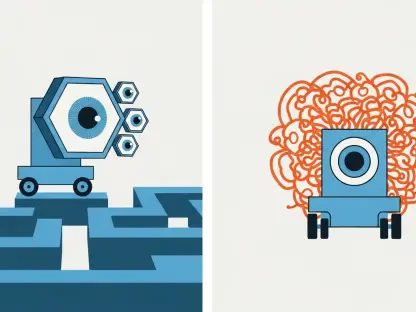Allow me to introduce Laurent Giraid, a distinguished technologist with a deep-rooted passion for Artificial Intelligence. With his extensive expertise in machine learning, natural language processing, and the ethical implications of AI, Laurent brings a unique perspective to the evolving landscape of software engineering. Today, we dive into a groundbreaking approach to software design pioneered by MIT researchers, focusing on modular, legible systems through “concepts” and “synchronizations.” Our conversation explores the inspiration behind this model, the challenges of current software development practices, and how this innovative framework could reshape the way we build and understand code, especially in the era of AI-driven tools.
What inspired you to explore a new approach to software design with “concepts” and “synchronizations”?
The inspiration came from a persistent frustration with how software is built today. Modern systems are often a tangled mess—features are scattered across multiple services, making them hard to track or modify without unintended consequences. We saw a need for a clearer, more structured way to design software that mirrors how humans think about functionality. By breaking systems into distinct “concepts” that handle specific tasks and using “synchronizations” to define how they interact, we aimed to create a framework that’s not just easier to read but also safer to work with. It’s about aligning software architecture with human intuition.
Can you break down what you mean by “concepts” in this context and why they matter?
Absolutely. A “concept” is essentially a self-contained unit of functionality. Think of something like a “share” button on a social media app. In our model, everything related to sharing—its state, actions, and logic—is bundled into one concept. This matters because it localizes functionality, so developers don’t have to hunt through different parts of the codebase to understand or tweak it. It makes the system more transparent and manageable, reducing the risk of errors when changes are made.
How do “synchronizations” fit into this picture, and what makes them so crucial?
Synchronizations are the glue that holds concepts together. They’re explicit rules that define how one concept interacts with another—for example, how a “share” action might trigger a notification. What makes them crucial is their clarity; instead of burying these interactions in low-level code, we express them at a high level using a simple domain-specific language. This not only makes the connections easy to understand but also allows us to analyze and verify them, ensuring the system behaves as intended.
You’ve highlighted “feature fragmentation” as a major issue in software today. Can you elaborate on the real-world impact of this problem?
Feature fragmentation is when a single feature, like adding a “like” button, gets split across multiple parts of a system—think user authentication, data storage, and UI updates. In practice, this creates headaches for developers who have to track down every piece to make a change, often leading to bugs or inconsistent behavior. For users, it can mean a frustrating experience if, say, a notification fails to send because one part wasn’t updated. It’s a reliability issue that slows down development and increases the risk of errors.
How does your model address this fragmentation compared to traditional software design methods?
Our model tackles fragmentation by centralizing related functionality into concepts. Instead of spreading a feature like “liking” across various services, we group everything into one concept, making it a single point of reference. Then, synchronizations clearly map out how that concept interacts with others. Unlike traditional methods where connections are often hidden in complex code, our approach keeps everything visible and organized, so developers can see the whole picture without digging through layers of abstraction.
In your case study, you centralized features like liking and sharing. What stood out to you when applying this approach?
What really stood out was how much simpler everything became. When we assigned features like liking or sharing to individual concepts, we could see and manage each piece independently. Testing became straightforward because we weren’t chasing dependencies across the system. Updating a feature also felt less risky—since it’s localized, we could predict the impact of changes more accurately. It was a clear demonstration of how modularity can cut through complexity.
How do you envision this concepts-and-synchronizations framework integrating with AI tools like large language models?
AI tools, especially large language models, have immense potential here. They can generate code for concepts or even draft synchronizations using our domain-specific language, since it’s simple and structured. This could speed up development significantly, letting developers focus on high-level design while AI handles repetitive coding tasks. However, there are risks—AI might produce incorrect or incomplete synchronizations if not guided properly, so human oversight remains critical to ensure the system’s integrity.
What’s your forecast for the future of software architecture in light of these innovations?
I believe we’re on the cusp of a cultural shift in software architecture. With approaches like concepts and synchronizations, paired with AI advancements, we could move toward a world where building software is less about writing raw code and more about composing well-defined, reusable components. I foresee “concept catalogs” becoming a norm—shared libraries of tested modules that developers can pick from, focusing only on how to connect them. This could make software more trustworthy, legible, and aligned with human needs, ultimately transforming how we design systems for the better.









